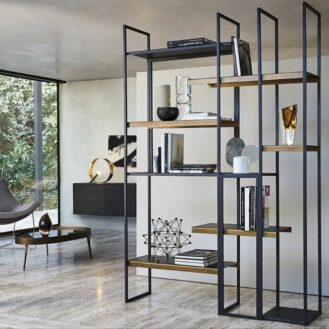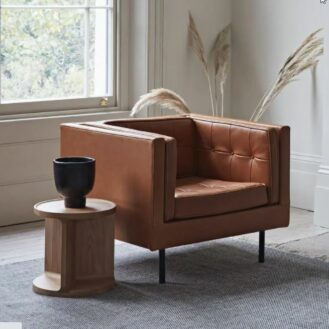There are many options to consider when choosing a desk such as the style, material, mobility and adjustability. This guide will examine the key criteria to consider when buying a desk for the workplace or home office.

There are many options to consider when choosing a desk such as the style, material, mobility and adjustability. This guide will examine the key criteria to consider when buying a desk for the workplace or home office.
The choice of desk for the workplace or home office can have a big influence on the user’s health, productivity and comfort. Making the right choice will depend on a number of factors such as:
Think about what kind of work the desk will be used for, where it will be installed and the equipment it will need to contain. Desks can be used for a number of purposes including administrative tasks, receiving clients, creative or manual tasks, computer work, calling clients or a combination of uses. The purpose of the desk will have an impact on the size, height, storage, privacy and security required.
Whether you need a home desk or a commercial desk make sure it is dimensioned correctly to suit your needs, especially if you will be in the same position for long periods of time. Things to consider include the recommended desk height and the distance of computer screens from the user’s eyes. Some desks may have adjustable height to accommodate for different users or to allow both standing and seated work positions.
Since teleworking has become more widespread with the coronavirus lockdowns, choosing a home office desk that allows you to work effectively has become more important. The design you choose will depend on how much space you have available, your decor and whether it will need to be used for other tasks outside of work hours. Creating a dedicated workspace in a home environment can have a positive impact on productivity and well-being. When this is not possible, there are a number of clever desk designs that can be hidden or folded away to allow you to enjoy your home without constantly being reminded of work.
Commercial desks tend to be more costly than home office desks because they often need to be more robust and meet local health and safety regulations. Making sure that desks are ergonomically suitable for the tasks at hand can also help employees avoid health problems and boost office productivity. If you need multiple desks for an open plan office, make sure that the desk model and floor plan chosen give each employee enough space to work safely and comfortably. You might want to consider desk partitions to limit noise levels or, inversely, desks without partitions to encourage interaction.
In commercial and public buildings, the design and style of the reception desk can be particularly important to give clients a positive first image. It can have a split level counter to receive visitors at standing level and also hide the desktop from view. If the reception desk will receive a high volume of people, consider whether sneeze guards or lockable storage will be required for security.
When choosing a type of desk and storage configuration, consider what tasks it will be used for. If you need a small desk for occasional laptop use, you might not need any storage. If you have a lot of documents to store, you might need a desk with a number of cupboards, shelves and drawers.
Desks with integrated holes and cable trays keep wires neatly arranged.
Executive desks are usually standalone, customizable and larger than standard desks, making them especially suited to individual offices. Workstations are designed for professional environments and often for multiple users. These desks are often modular to allow a number of desk configurations, and typically include a partition screen, storage and holes for power cables.
Consider the total height, width and length of the space available for the desk, taking into account windows and lights so that the desk is in a well lit, pleasant environment. Be sure to allow enough space for circulation and desk chairs and, if necessary, space to receive visitors or clients.
The majority of desks available are free-standing, offering flexibility in terms of positioning. For compact spaces, a foldable wall-mounted desk can free up space when the desk is not in use and allow for easy cleaning. Free-standing desks also come in a number of compact designs. This can be particularly useful for desks in the home, student residences, hotels or those used only occasionally.
There are a number of desk shapes available adapted to certain desk functions:
The material of the desktop and the legs can have a big impact on the ease of maintenance and the aesthetic style of the desk.
Wooden desks can come in both solid and engineered wood. Solid wood desks can use traditional joinery techniques can add a touch of prestige to an office environment. Engineered wood products such as plywood and veneer give a greater flexibility of shapes in contemporary desk designs, with the aesthetics of real wood.
Wood-based desks finished with melamine or laminate are economical, easy to clean and available in a wide range of colors and finishes. Better quality products usually have a high-quality core such as MDF or plywood rather than chipboards of lower densities. Less expensive products might save on production costs by only using the laminate on the visible sides of the desk.
Glass desks are stylish and optimize natural light but are more fragile than other materials and may chip or scratch over time. A glass table top can be combined with a wood base, with a metal base for a more industrial look or be all-glass for a minimalist appearance. Metal is normally only used for the desk base. While it is less common to have metal desktops, they can be great for slim industrial and minimalist designs.
With a drive for healthier more comfortable office environments, manufacturers are proposing innovative desk solutions such as:


